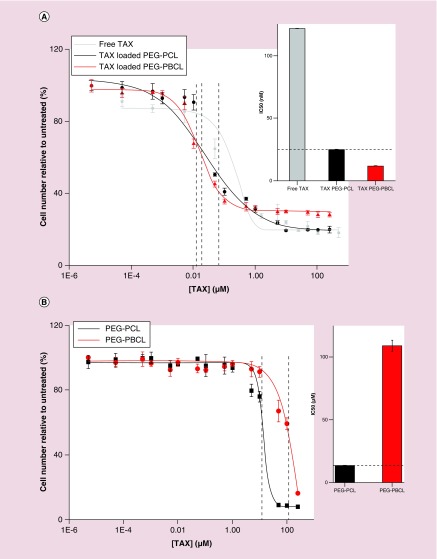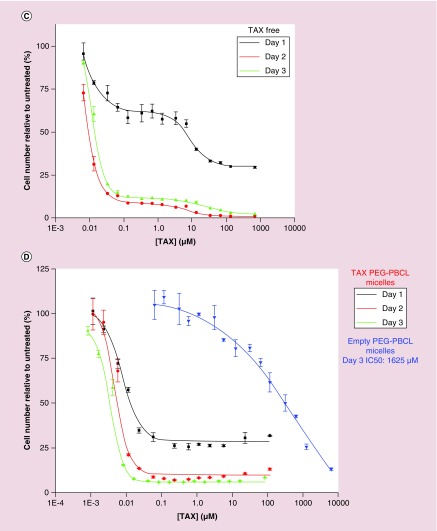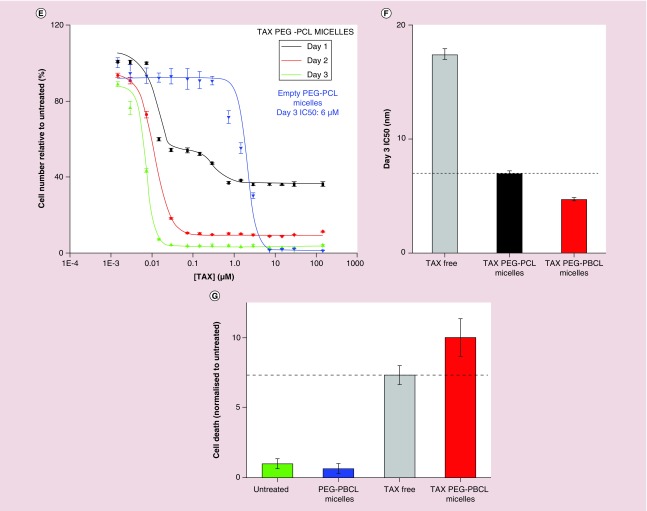Figure 3. . Cell viability with paclitaxel.
(A) Effects of drug-loaded micelles can be applied across various cell types. Cell viability of A549 (epithelial lung cancer) cells treated with free and polymer-loaded drugs reveal a clear advantage of loaded formulation over free drug (IC50 bar graph inset). (B) inertness of nanocarrier (no effect of empty carriers on viability. (C–E) EC4 cell viability kinetics with free TAX, PEG–PBCL TAX and PEG–PCL TAX, respectively. While both free and encapsulated drugs show similar effects, cell viability of free drug at day 3 is higher than that for day 2, presumably due to degradation of free drug in the presence of water. Encapsulated drug is protected from hydrolysis, which is supported by consistently decreasing viability with time. At all three time points (days 1, 2 or 3), the IC50 of TAX-loaded PEG–PBCL worms were lower than that of corresponding PEG–PCL worms. Empty PEG–PBCL micelles were inert (IC50 >1500 μM). However, PEG–PCL worms exhibited significant toxicity (IC50 ˜6 μM), as seen previously in Figure 3B. (F) Bar graph representation of the IC50 values of different formulations after 3 days. Less concentration of Paclitaxel is required to induce cell death in encapsulated form than in free form, with TAX PEG–PBCL micelles being three-times more potent than free drug, and 1.5-times more potent than TAX-loaded PEG–PCL worms. (G) Treatment with TAX leads to a higher number of floating cells that do not stain negative with trypan blue, indicating cell death. Cell death is minimum with untreated cells or ones incubated with empty filomicelles. Free as well as encapsulated TAX induces significant cell death, with loading on to micelles inducing 40% more cell death.



